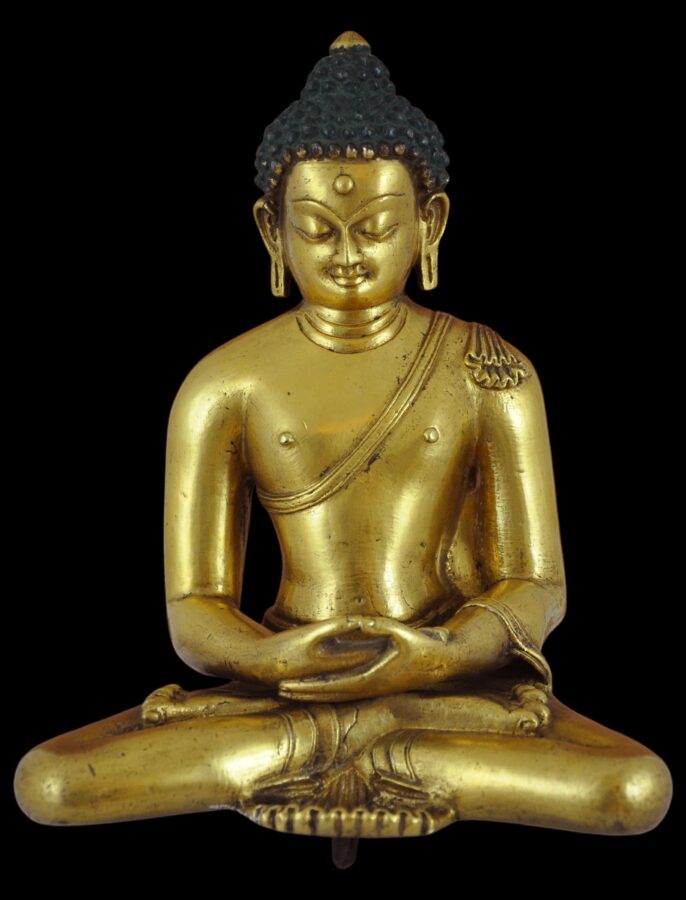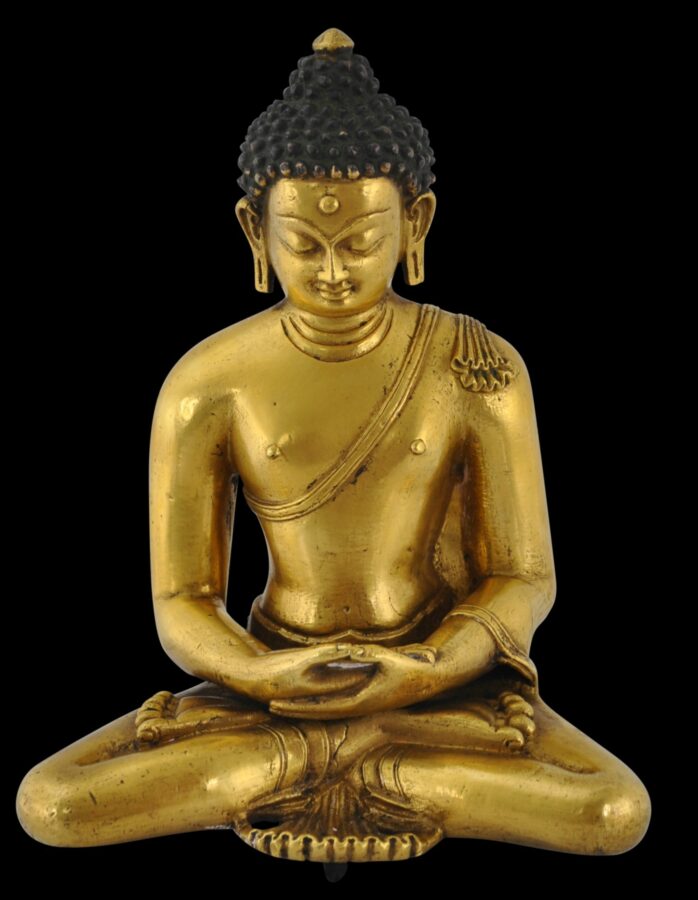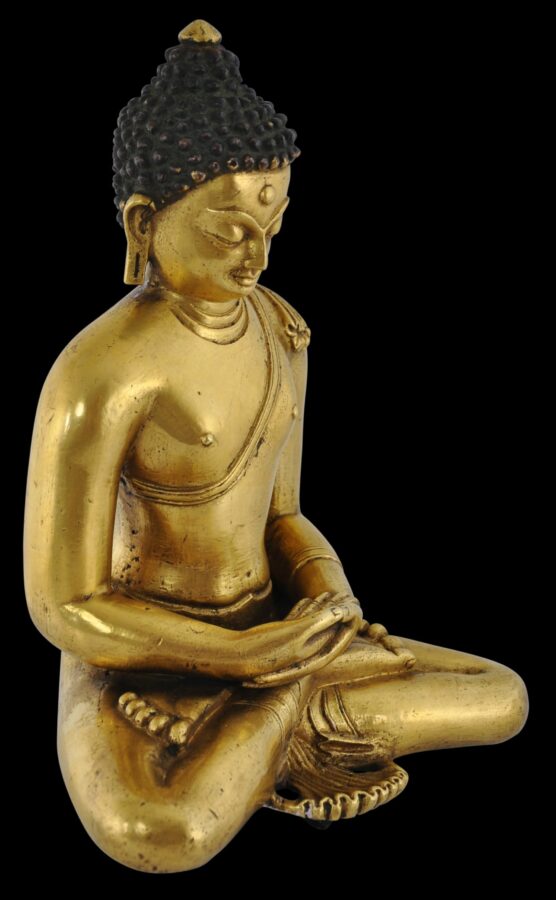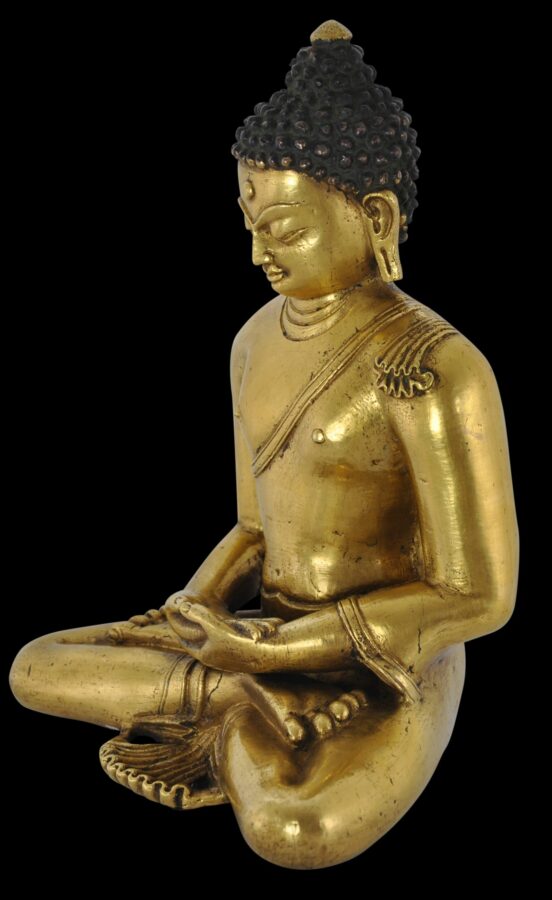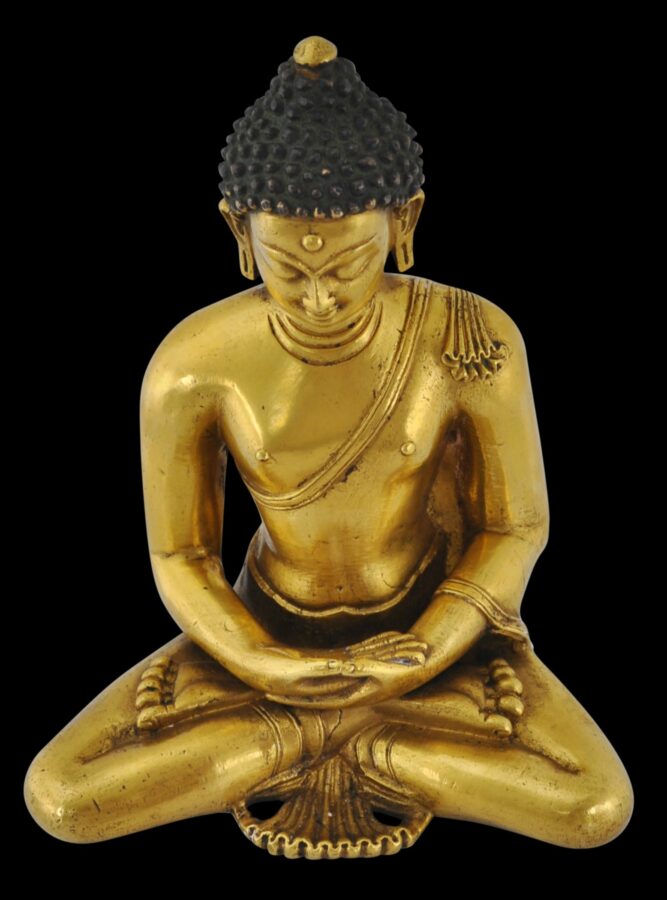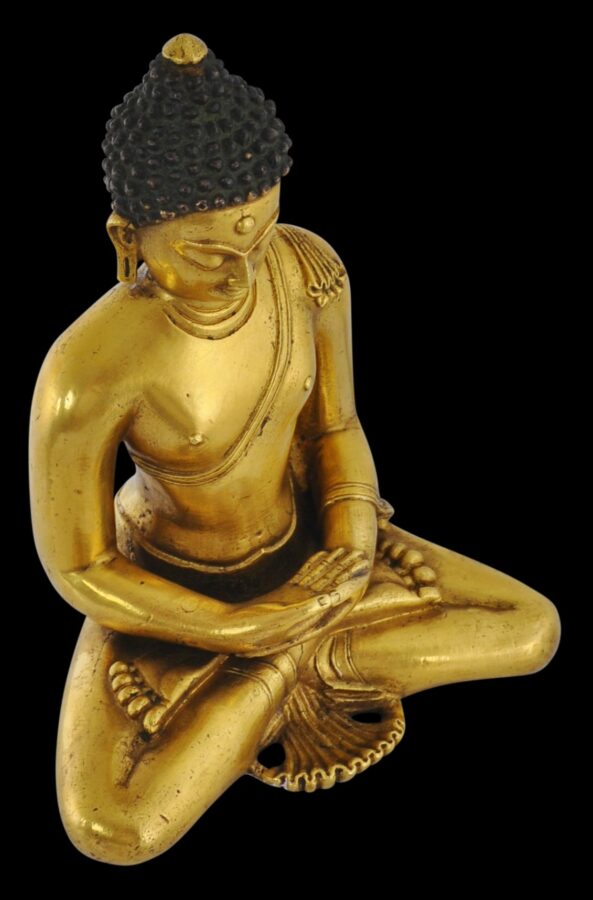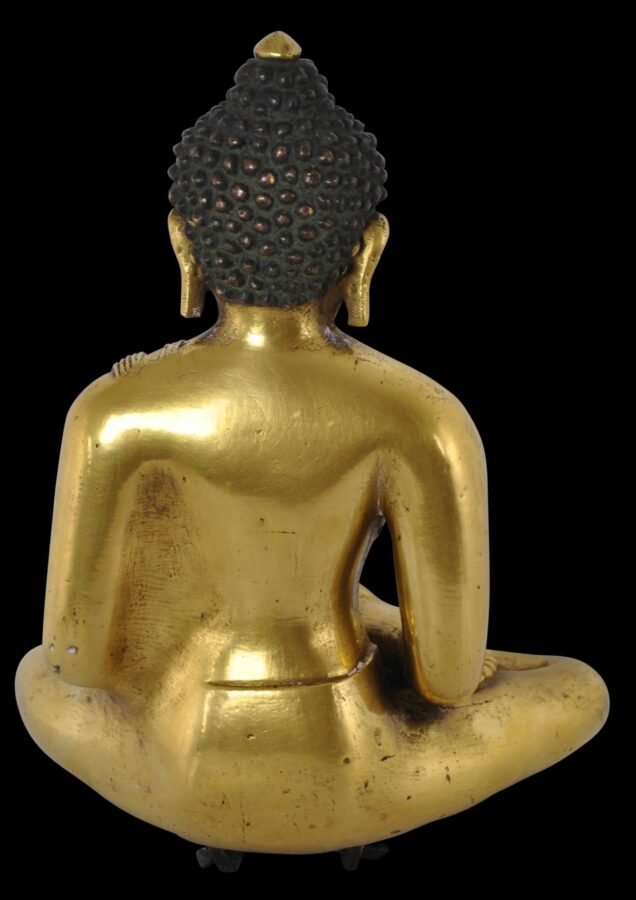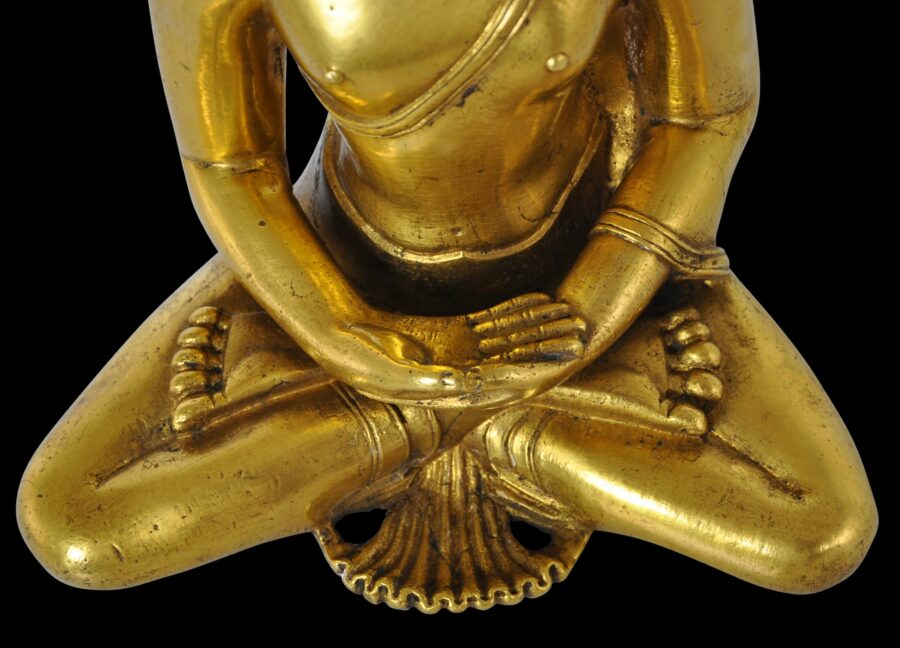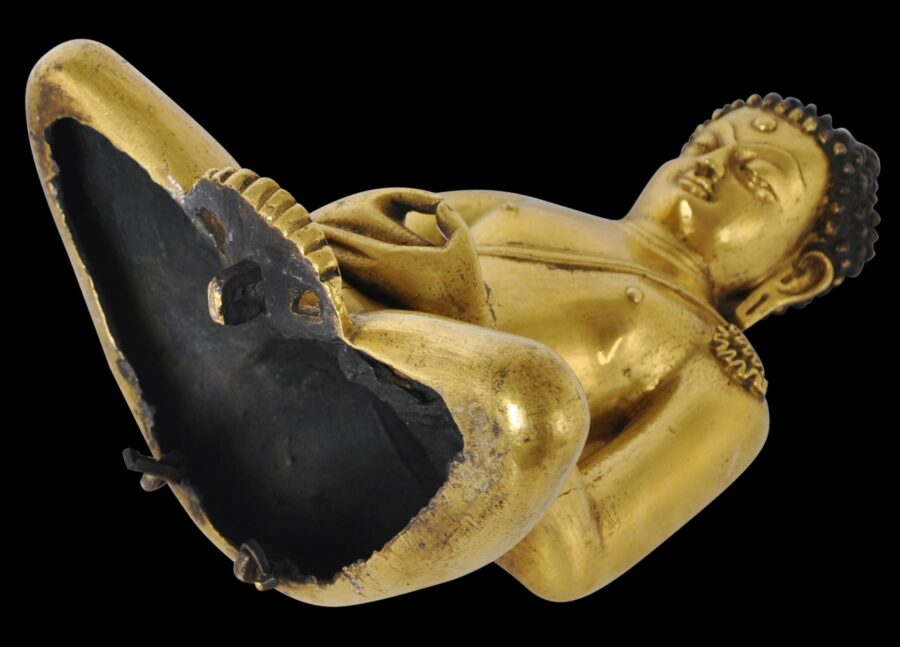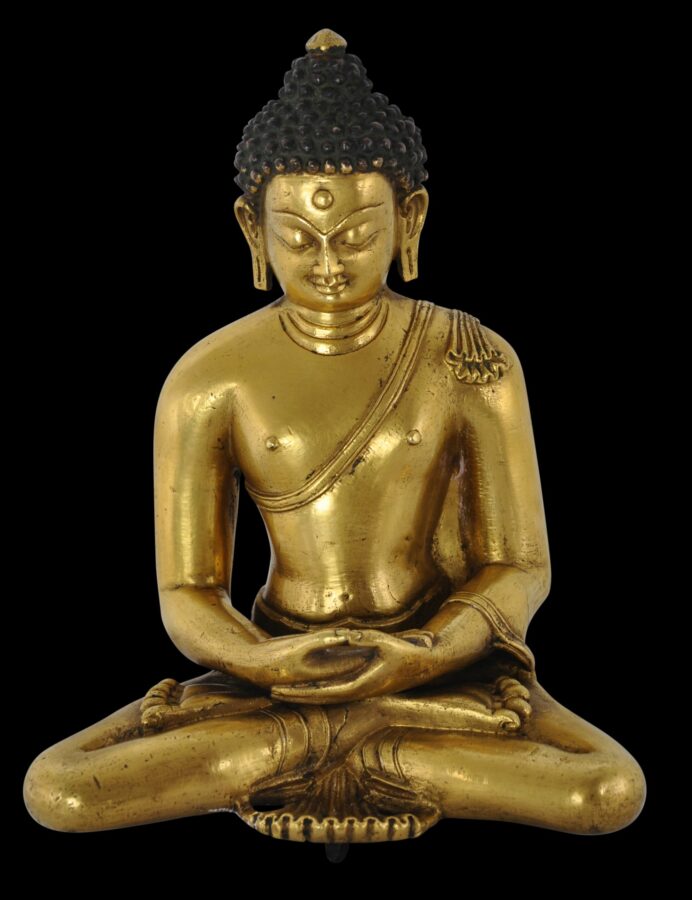Enquiry about object: 9199
Nepalese Gilded Bronze Buddha
Kathmandu Valley, Nepal late 18th-19th century
height: 23cm, width: 17cm, depth: 11cm, weight: 1,850g
Provenance
private collection, UK
This beautiful image of the Buddha, from 18th-19th century Nepal, is of gilded bronze. The image sits cross legged and in the vajrasana posture, with hands in the meditative dhyani mudra position.
The Buddha wears a tightly-fitting, diaphanous sanghati robe with prominent hems, and a beautifully bunched, pleated sash over the left shoulder. The rounded face has full, pursed lips; a triangular nose; slender, downcast eyes; and finely incised, arched eyebrows. There are three prominent neck folds or creases. The head is surmounted by a ushnisha topped by a gilded cintamani finial. There is a prominent, raised, circular urna on the forehead.
The ears are elongated, and so are those of a prince. The earlobes are rectangular and drawn on earlier influence.
The hair, arrayed in neat ‘peppercorn’ rows retains, remnants of blue pigmentation.
The image probably would have sat on a separately cast throne. The base of the image is fitted with three loops to secure it to a base.
Various aspects follow that of Newar Buddhas of Nepal – the well-modelled torso; the tightly fitting sanghati; the finely articulated fingers, toes and nails; the shape of the ear lobes; the webbed hands; and the relatively broad forehead.
Overall, this is a highly decorative image. There are almost no losses to the gilding which has developed a rich, soft hue over time.
References
Pal, P., Art from the Himalayas & China: Asian Art at the Norton Simon Museum, Yale University Press, 2003.


